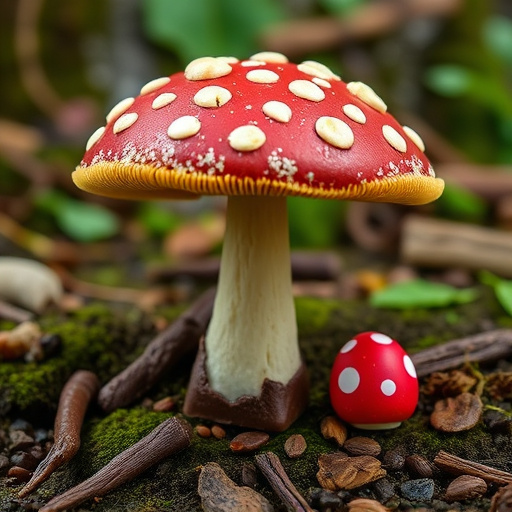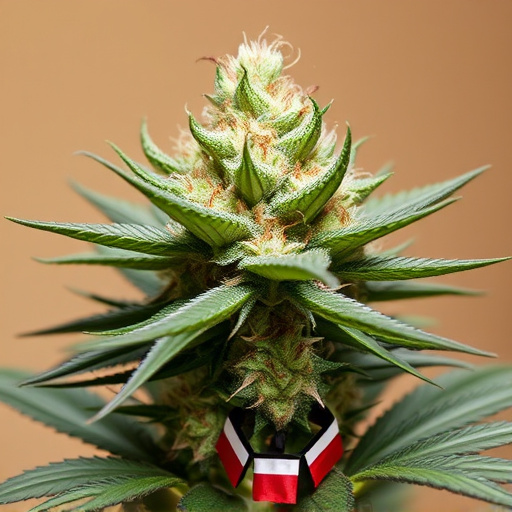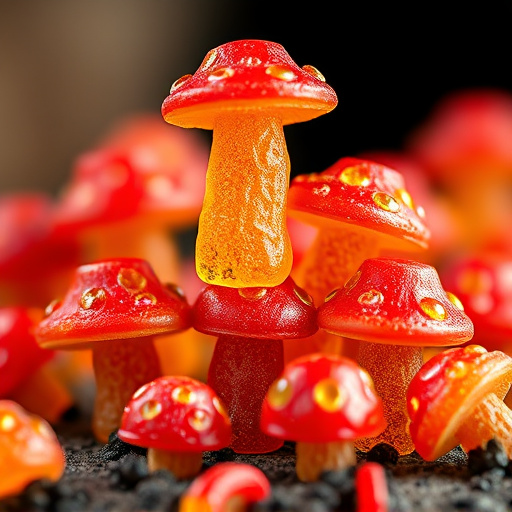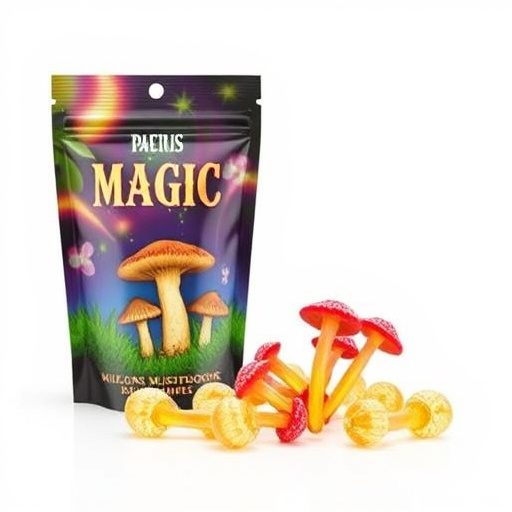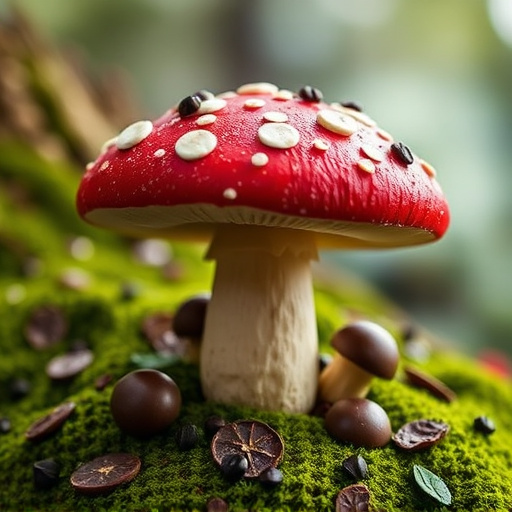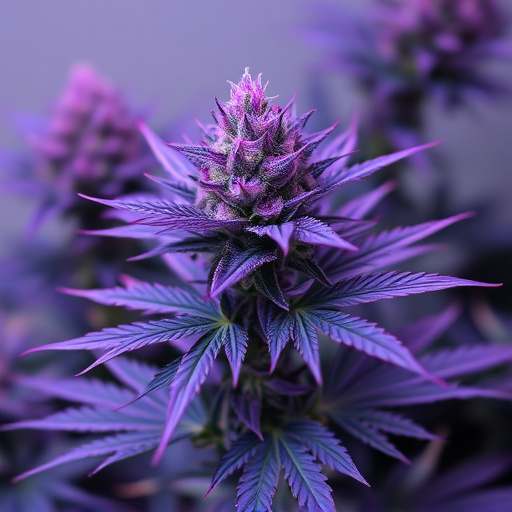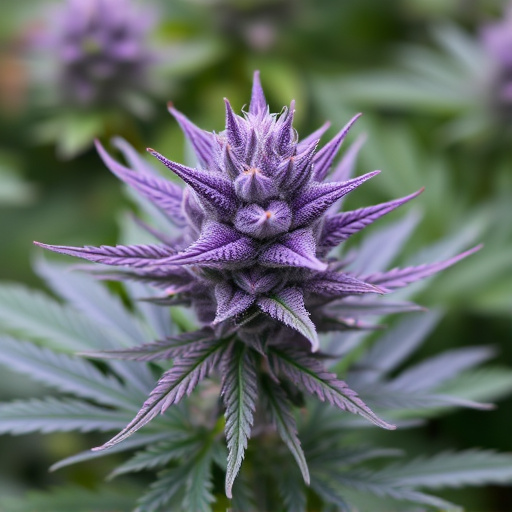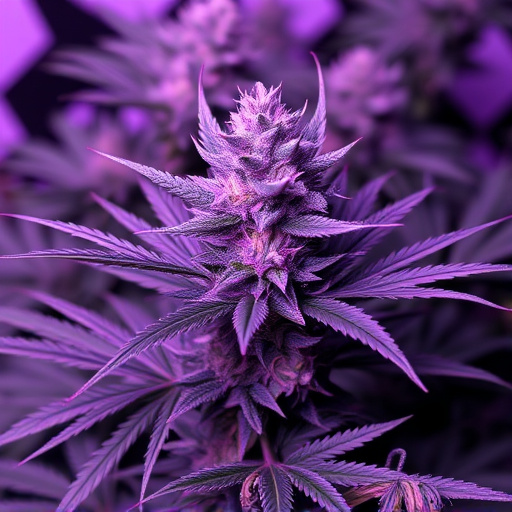THC in purple cannabis strains interacts with the body's endocannabinoid system, influencing hunger hormones ghrelin and leptin. This interaction can lead to changes in appetite, offering potential benefits for managing eating habits and disorders. Recent research highlights the promising role of these strains' anthocyanins (antioxidants) and terpene profiles in regulating hunger, suggesting natural alternatives for controlling cravings. Further exploration could lead to targeted treatments for conditions related to excessive or insufficient hunger, with personalized medicine approaches using purple strains for appetite stimulation or weight management.
THC, the psychoactive compound in cannabis, has surprising effects on our appetite. Beyond mere hunger pangs, THC interacts with the body’s endocannabinoid system, which plays a key role in regulating hunger hormones. This article delves into the science behind these interactions, exploring how specific purple strains of cannabis can modulate these hormones. We’ll discuss potential implications for future research and provide insights into the complex relationship between THC, hunger, and our overall well-being.
- Understanding THC and Its Interaction with the Endocannabinoid System
- The Role of Purple Strains in Modulating Hunger Hormones
- Potential Implications and Future Research Directions
Understanding THC and Its Interaction with the Endocannabinoid System
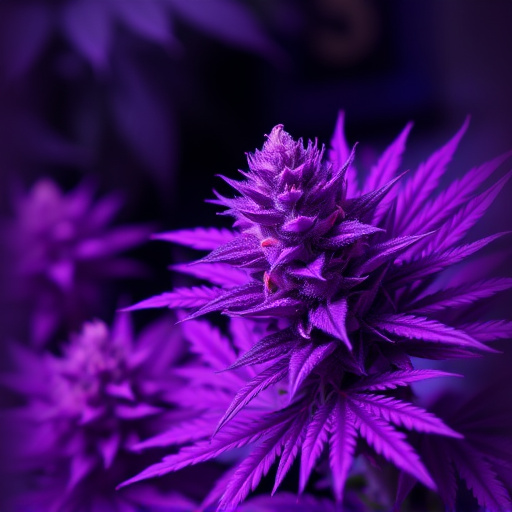
THC, or tetrahydrocannabinol, is a key compound found in cannabis plants, particularly in its purple strains. It interacts with the body’s endocannabinoid system (ECS), which plays a crucial role in regulating various physiological processes, including appetite and hunger. The ECS consists of endocannabinoids, receptors, and enzymes that work together to maintain homeostasis, or balance, within the body.
When THC binds to specific receptors in the ECS, particularly CB1 receptors located in the brain and CB2 receptors found in the immune system, it triggers a cascade of events. This interaction can lead to changes in hunger hormones, such as ghrelin and leptin, which are responsible for signaling feelings of hunger and fullness, respectively. Research suggests that THC may reduce ghrelin levels, leading to decreased appetite, while also increasing leptin sensitivity, promoting feelings of satiety. These effects could explain why some individuals experience increased or decreased appetite after consuming cannabis, especially the purple strains known for their higher THC content.
The Role of Purple Strains in Modulating Hunger Hormones
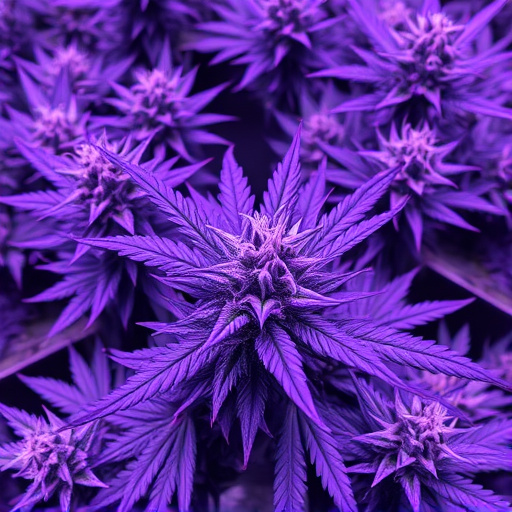
The purple strains of cannabis have long been celebrated for their unique visual appeal, but recent research suggests they may also play a significant role in modulating hunger hormones. These strains contain higher levels of anthocyanins, powerful antioxidants that give them their distinctive hue. Beyond their aesthetic qualities, anthocyanins are believed to interact with the body’s endocannabinoid system, which regulates appetite and metabolism. Studies indicate that compounds found in purple strains can influence the production and release of key hunger hormones like leptin and ghrelin, potentially leading to reduced cravings and a decreased desire for high-calorie foods.
Additionally, certain terpene profiles often associated with purple strains, such as linalool and myrcene, have shown promising effects on hunger control. These terpenes are known to mimic the actions of plant-based cannabinoids and may work synergistically with other compounds in the strain to further regulate appetite. As a result, consumers looking for natural ways to manage their eating habits might find particular purple strains beneficial in achieving a balanced diet and improved overall health.
Potential Implications and Future Research Directions
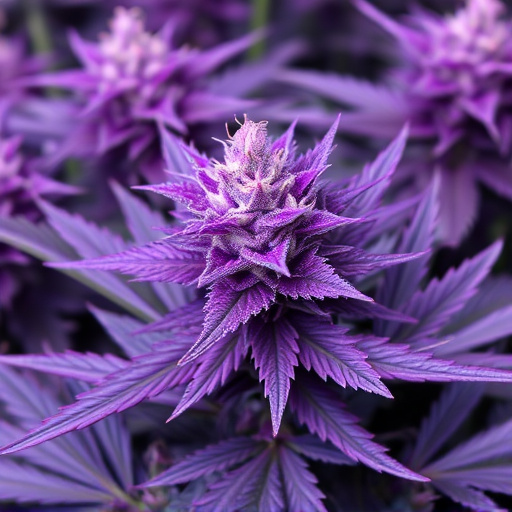
The exploration of THC’s impact on hunger hormones opens up intriguing possibilities for both medical and culinary applications, particularly with the growing interest in purple strains of cannabis. These strains, known for their distinct visual appeal and potential therapeutic benefits, could offer novel approaches to managing appetite and eating disorders. Future research should focus on unraveling the complex interplay between THC, endocannabinoid systems, and specific hormones like ghrelin and leptin. Understanding these mechanisms could lead to the development of targeted treatments for conditions characterized by excessive or insufficient hunger.
Moreover, investigating the effects of different cannabis strains on appetite could inform personalized medicine approaches. For instance, purple strains might be explored for their potential in stimulating appetite in patients with conditions like cancer or anorexia nervosa. Conversely, understanding the mechanisms behind THC’s inhibitory effect on hunger could contribute to the design of weight management aids. This research direction is especially relevant given the global focus on health and wellness, where natural solutions are increasingly sought after.
In conclusion, our exploration reveals that THC interacts with the endocannabinoid system, influencing hunger hormones. The unique properties of purple strains of cannabis offer promising insights into modulating these effects. Future research should delve deeper into these mechanisms to unlock potential therapeutic applications for managing appetite and nutrition-related conditions. Understanding the complex relationship between THC, the endocannabinoid system, and hunger hormones is a crucial step towards harnessing the power of purple strains for enhanced well-being.
